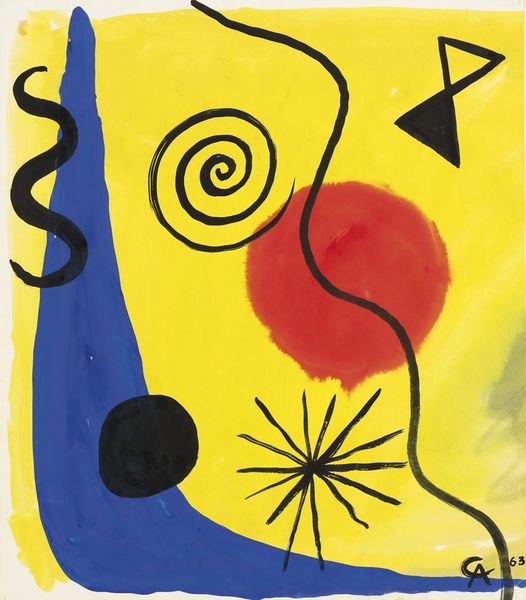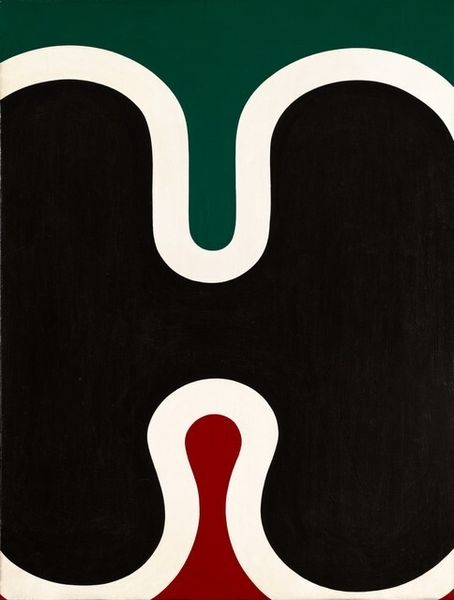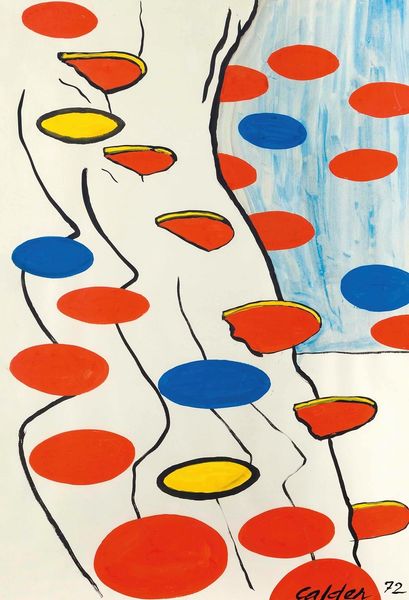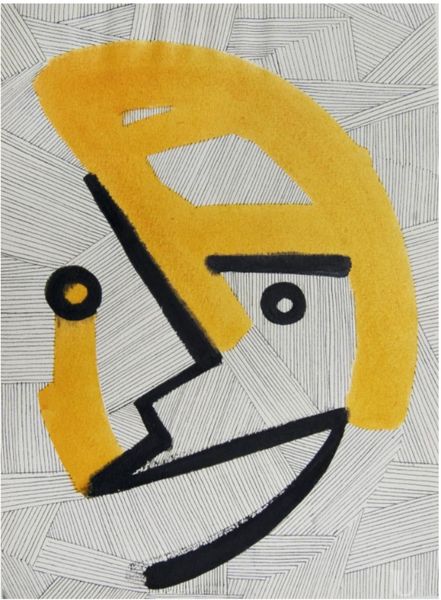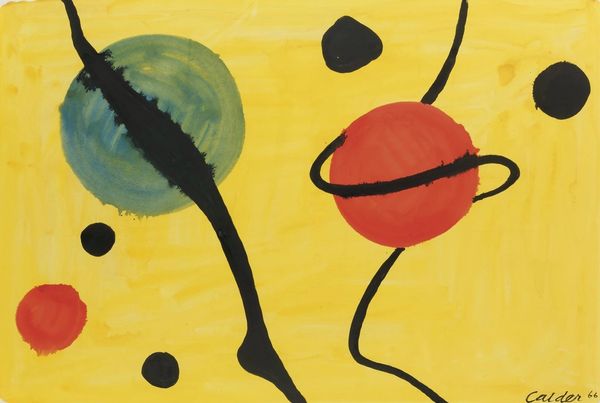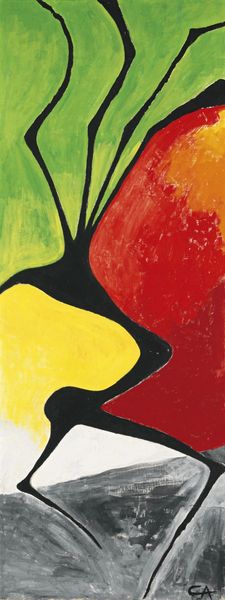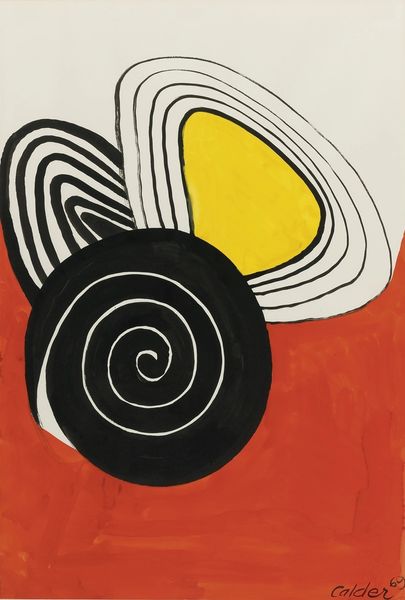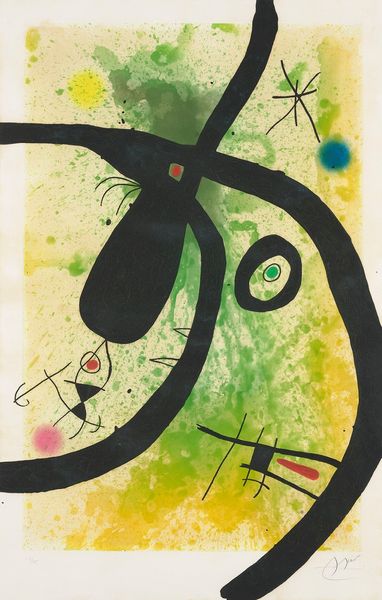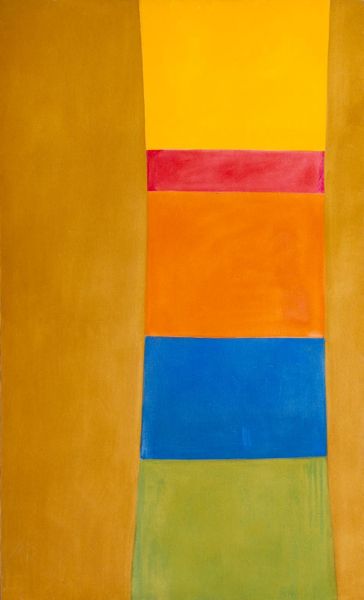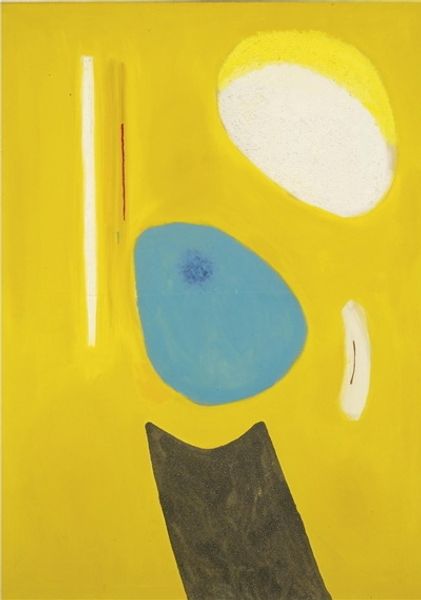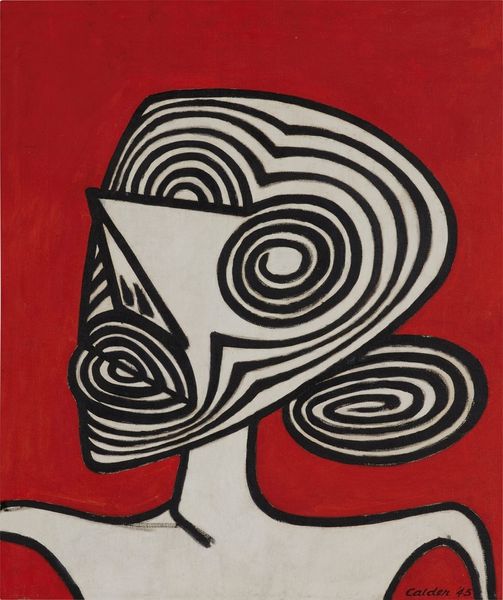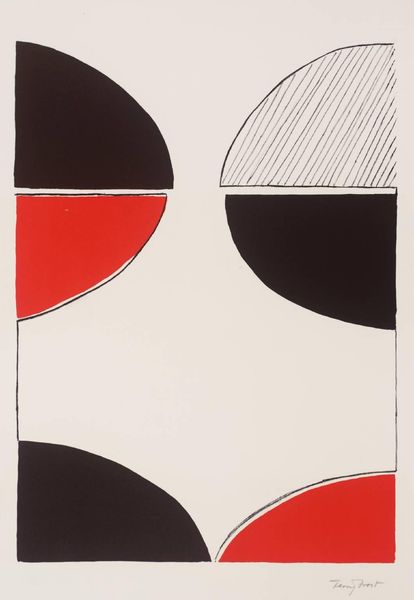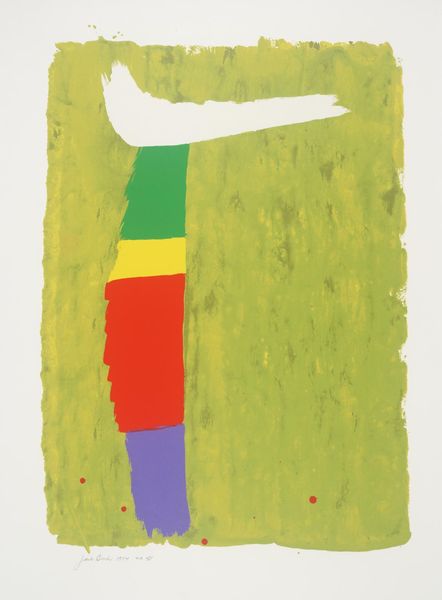
painting, watercolor
portrait
painting
pop art
abstract
form
watercolor
line
portrait art
modernism
Copyright: Modern Artists: Artvee
Editor: This is Alexander Calder's "Head," created in 1944 using watercolor. The simple forms and bright colors give it a really playful feel. What do you see in this piece, from your perspective? Curator: Well, it's crucial to consider Calder's broader practice here. Primarily known for his mobiles and stabiles, these often industrially fabricated sculptures disrupted the established art world through their novel use of material. How does this watercolour relate to his engagement with materiality and production? It is vital to investigate the apparent contrast between industrial materials used in his best-known works and the watercolor in 'Head', Editor: That’s interesting, the contrast. So, do you think the apparent simplicity of the watercolor is maybe… deceptive? Like there's something more complex happening in terms of his approach? Curator: Absolutely. Consider the historical context: this work was created during the Second World War. Material rationing was prevalent; watercolor would have been readily available while more conventional media such as bronze were not. Can we view the material constraints during the period as contributing to artistic choices and thus shaping aesthetic preferences? How the work comments on the limits imposed by the realities of the time. Editor: That makes sense. It highlights that art making isn't separate from social constraints; those practical factors shape the work. Curator: Precisely. And the bold lines in "Head" feel like a distillation of the structures he usually built. Do the restrictions encourage new ideas, or do they force creatives to confront what are truly essential within their aesthetic aims? Editor: I never thought about the lines in terms of physical structure before. It feels like an essential sketch that conveys form, and it underscores how the constraints impact and shape creativity. Thanks for this! Curator: Of course! Always remember, every element within the art is interwoven with context and material circumstance, providing depth into any analysis.
Comments
No comments
Be the first to comment and join the conversation on the ultimate creative platform.
